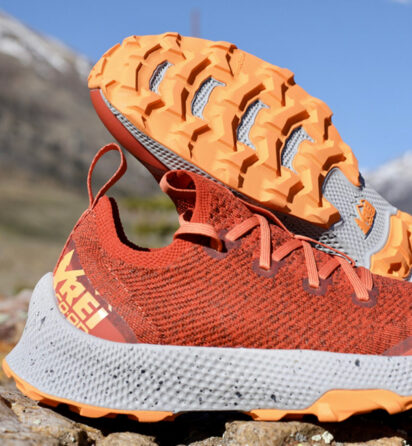
 Eat up: For ultra runs, you should consume 200–300 calories (mostly from carbohydrates) per hour while running. You don’t want to arrive at the start hungry, or to expend energy to digest things that are high in fat or fiber during the race. Pre-fuel: Have a light meal at least an hour or two before the race. (or a few good long drinks) of water every 15–20 minutes while running. Maintain hydration: Drink about 5–10 fl. about two hours before you run so you’ll start off properly hydrated. Look at both general running sites and trail-running sites. Online resources: A growing number of websites have searchable race calendars. Your local REI store is a great place to start. Local running clubs classes and stores: These can provide you with both race recommendations and training support. One option is our 16-week training plan for a trail marathon: Follow it, repeating week 12, to create a 17-week 50K training calendar. Follow whatever training regimen works for you. Most races start early in the morning, so staying as close as possible is desirable.Īllow sufficient training time: For a 50K race, you need to train for about four months. If it’s a popular event, book a site or room well in advance to be sure you get a spot. If you need to acclimate to high altitude or heat, though, then you’ll need to schedule the race closer to the end of your trip.Ĭonsider camping or lodging details: Many trail ultras are in remote areas, so you’ll need to arrange for nearby camping or lodging. Most people schedule the race near the start of a trip to allow recovery time afterward. Those races are likely to sell out quickly, too, so sign up early. Think about making it a vacation, too: That’s an easy call if you’re traveling to a spectacular setting. Local events offer more attainable entries and a welcoming, low-key vibe. After you complete a 50K, then you can start to dream about longer distances.ĭecide if you want to go legendary or local: Iconic races like Wisconsin’s Ice Age 50, Wyoming’s Big Horn Trail Race and California’s Tahoe Rim Trail Endurance Runs sell out fast, yet also offer top-notch organization and a festival-like atmosphere. “The wall” still looms for many at about 20 miles, meaning you might have to summon your superpowers to complete a double-digit (11-mile) grind to the finish line.
Eat up: For ultra runs, you should consume 200–300 calories (mostly from carbohydrates) per hour while running. You don’t want to arrive at the start hungry, or to expend energy to digest things that are high in fat or fiber during the race. Pre-fuel: Have a light meal at least an hour or two before the race. (or a few good long drinks) of water every 15–20 minutes while running. Maintain hydration: Drink about 5–10 fl. about two hours before you run so you’ll start off properly hydrated. Look at both general running sites and trail-running sites. Online resources: A growing number of websites have searchable race calendars. Your local REI store is a great place to start. Local running clubs classes and stores: These can provide you with both race recommendations and training support. One option is our 16-week training plan for a trail marathon: Follow it, repeating week 12, to create a 17-week 50K training calendar. Follow whatever training regimen works for you. Most races start early in the morning, so staying as close as possible is desirable.Īllow sufficient training time: For a 50K race, you need to train for about four months. If it’s a popular event, book a site or room well in advance to be sure you get a spot. If you need to acclimate to high altitude or heat, though, then you’ll need to schedule the race closer to the end of your trip.Ĭonsider camping or lodging details: Many trail ultras are in remote areas, so you’ll need to arrange for nearby camping or lodging. Most people schedule the race near the start of a trip to allow recovery time afterward. Those races are likely to sell out quickly, too, so sign up early. Think about making it a vacation, too: That’s an easy call if you’re traveling to a spectacular setting. Local events offer more attainable entries and a welcoming, low-key vibe. After you complete a 50K, then you can start to dream about longer distances.ĭecide if you want to go legendary or local: Iconic races like Wisconsin’s Ice Age 50, Wyoming’s Big Horn Trail Race and California’s Tahoe Rim Trail Endurance Runs sell out fast, yet also offer top-notch organization and a festival-like atmosphere. “The wall” still looms for many at about 20 miles, meaning you might have to summon your superpowers to complete a double-digit (11-mile) grind to the finish line. 
Start with a 50K (31.2 miles): Though only slightly longer than a marathon, those five extra miles can be a beast. As you consider your choices, keep the following in mind: Trail running’s surging popularity has spilled over to the ultra world, meaning you have an abundance of options.

And a single event will often offer courses of varying distances. Distances aren’t standardized either: You might find a 55k event or a 32-mile event, for example.







 0 kommentar(er)
0 kommentar(er)
